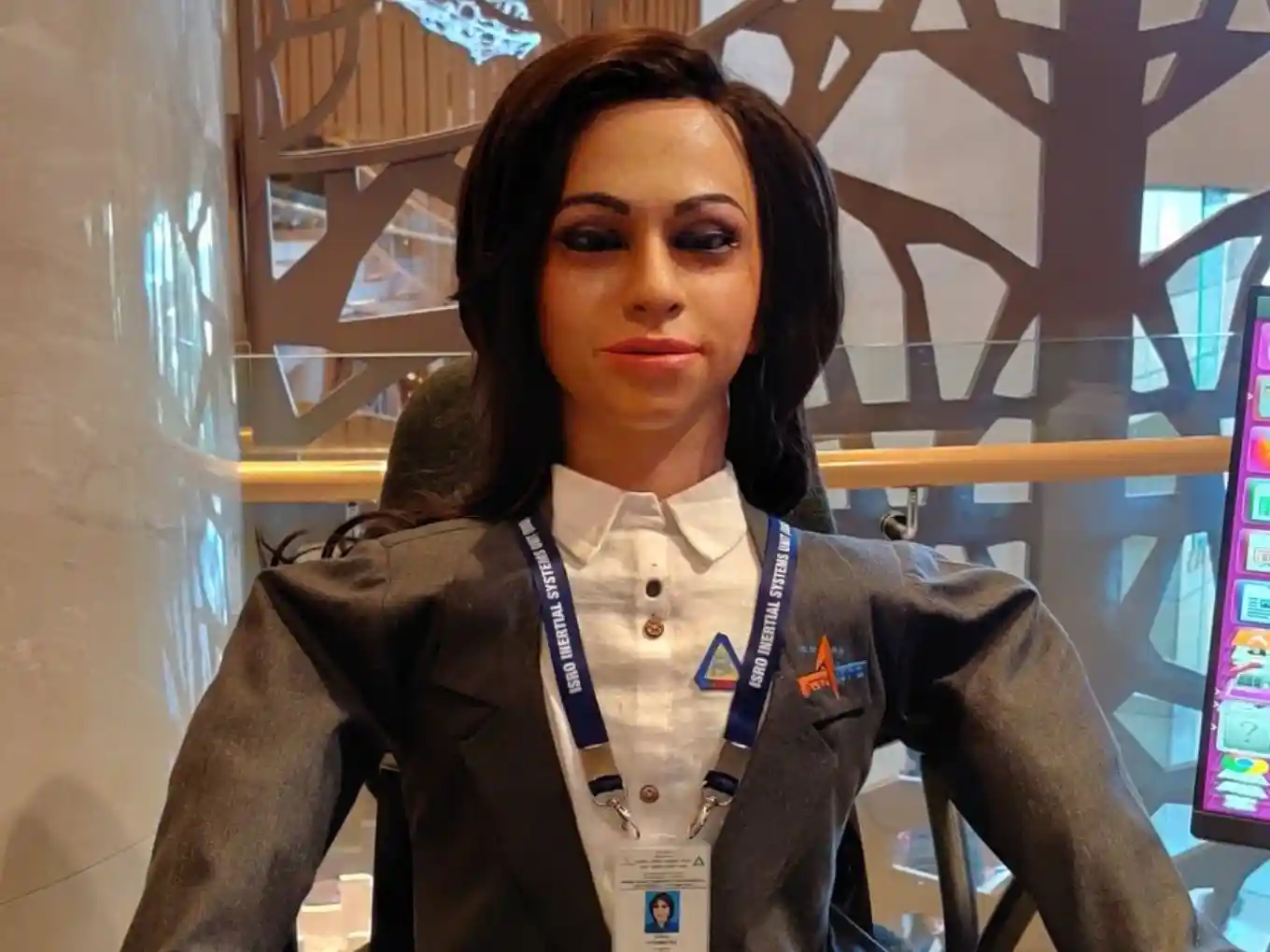Humanoid in the Stars: Vyommitra's Role in India's Space Odyssey
Vyommitra, the ISRO humanoid robot, joins India's Gaganyaan mission. It symbolises India's space ambition and raises questions about human-robot roles in space exploration. Balancing this partnership is key for the future.

Vyommitra | Source: INC42
In the unending expanse of the cosmos, where humans have dared to venture, the story of Vyommitra, a remarkable female-looking humanoid robot, comes to life. Developed by the Indian Space Research Organisation (ISRO), Vyommitra is poised to join the elite crew of the Gaganyaan, India's ambitious crewed orbital spacecraft, showcasing the fusion of cutting-edge technology and human ingenuity.
Vyommitra's design is captivating. With her sleek, humanoid appearance, she could easily pass for an astronaut—a deliberate choice by ISRO. But Vyommitra is more than just a pretty face. She is a marvel of artificial intelligence, machine learning, and robotic engineering, designed to perform a multitude of tasks within the confines of outer space.
The Gaganyaan mission itself is a significant milestone for India. It represents the nation's determination to explore the uncharted territories of space and to push the boundaries of human potential. As the mission's robotic crew member, Vyommitra plays a pivotal role in supporting the astronauts during their journey into space. What sets Vyommitra apart is her multifaceted utility. While her humanoid appearance might seem like a nod to science fiction, it serves practical purposes. Humanoid robots like Vyommitra can provide astronauts with a familiar and comforting presence in the often lonely and isolating environment of space. The psychological impact of having a humanoid companion could be profound, helping astronauts cope with the stress and challenges of extended missions.
Beyond her appearance, Vyommitra is a highly intelligent and adaptable machine. Armed with advanced artificial intelligence algorithms, she can understand and respond to verbal commands, making her a valuable intermediary between the astronauts and the spacecraft's systems. Her primary mission is to assist in monitoring the spacecraft and performing tasks as required, such as operating and maintaining life support systems. In the event of an emergency, Vyommitra can swiftly assess the situation and execute predefined procedures, showcasing her ability to remain calm under pressure.
While Vyommitra stands as a shining example of Indian innovation, other space organisations have also made significant strides in the realm of space robotics. NASA, for instance, has been a pioneer in this field. The agency's Robonaut series, which includes Robonaut 2 (R2), is designed to assist astronauts with intricate tasks on the International Space Station (ISS). These humanoids may not be headed to the stars, but they demonstrate the potential of robots working alongside humans in the zero-gravity environment of space.
The European Space Agency (ESA) has been actively developing robots like the ExoMars rover, designed to explore the Martian surface. While not humanoid, the rover's advanced capabilities exemplify the adaptability of robotics in extraterrestrial environments. Japan's Japan Aerospace Exploration Agency (JAXA) has made significant contributions through missions like Hayabusa and Hayabusa2, which successfully collected samples from asteroids. Russia's space agency, Roscosmos, has its own history of pioneering space robotics with missions like Luna and Venera. China's China National Space Administration (CNSA) has explored the lunar surface with rovers like Yutu-2.
The positive impacts of these developments are abundant. First and foremost, robots like Vyommitra enhance the safety and efficiency of space missions. They can perform tasks that are hazardous, repetitive, or simply too time-consuming for astronauts. Moreover, their ability to withstand the harsh conditions of space and adapt to unforeseen challenges makes them invaluable assets. However, there are also potential negative impacts to consider. The increased use of robots in space could lead to concerns about job displacement for astronauts. As robots become more capable, there might be a temptation to send fewer humans into space, raising ethical and economic questions about the future of human space exploration.
To address these challenges, space organizations must strike a balance between human and robotic missions. Robots can handle routine tasks and explore hostile environments, freeing astronauts to focus on complex and uniquely human activities. This collaboration between humans and robots can extend the reach of space exploration and maximize the benefits of both.
Vyommitra represents the marriage of technology and human exploration. Her role on the Gaganyaan mission showcases India's dedication to space exploration and innovation. While other space organisations have their own robotic achievements, the collective impact of these developments is undeniable. The positive and negative impacts of space robotics must be carefully managed to ensure that humans and machines can work harmoniously in the pursuit of knowledge beyond our world. The future of space exploration is a dynamic partnership between human astronauts and their robotic companions, unlocking the mysteries of the cosmos together.


